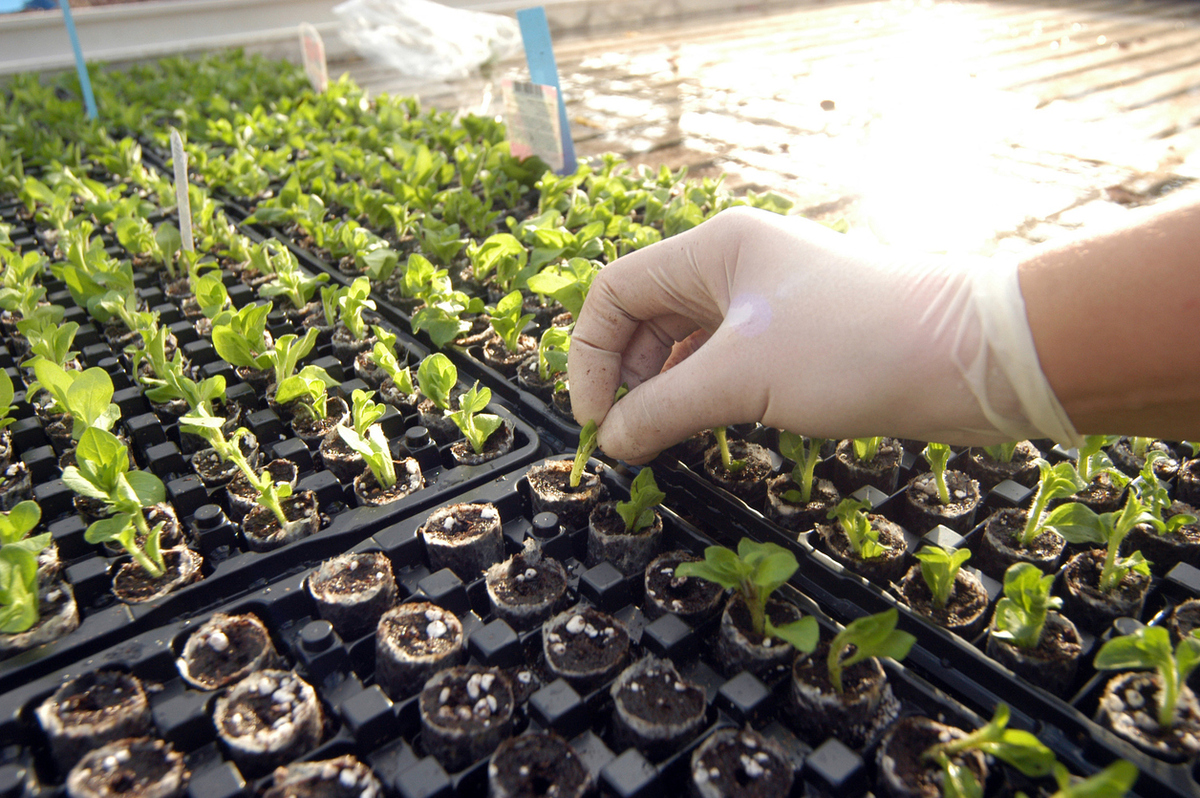Finding the Right Fit: Safe Innovation Framework for Crop Breeding
| |
Innovations often move faster than the regulations that govern them. In agriculture, powerful tools in modern biotechnology (e.g., genetic modification and genome editing) have already been reshaping plant breeding for over two decades. However, regulations in many countries are still subject to deliberation and amendments amidst research and development. The gap in regulations raises questions about safety, policy, and progress. Could this be a time to build a regulatory framework model that meets the needs of both science and society? Let us find out.

A study published in GM Crops & Food conducted a stakeholder engagement to discuss their views, preferences, and perceived challenges on safe innovation and innovative tools in plant breeding. Stakeholders from academia, government organizations, interest groups, and plant and seed breeding companies in the Netherlands were asked to participate in workshops and interviews. These were undertaken to form a basis for the development of a proposed framework for safe innovation presented in the paper.
During the engagement, five scenarios of potential safety frameworks were introduced and discussed with the participants. As shown below, the scenarios were ranked based on the participants’ opinions and preferences:
- Design thinking (least preferred, 0/11, avg. score: 3.8)
The design thinking scenario centers on understanding the needs and context of end users. This scenario emphasizes that innovation should be guided by those who will use the product or service. This approach involves multiple stages: empathizing with users, defining the problem, generating creative solutions, developing prototypes, and testing them with real users.
While this scenario highlights a user-centered process, stakeholders in plant breeding viewed it as the least favorable scenario, expressing that it focuses too heavily on solving a specific problem. - Safe-by-Design (2/11, avg. score: 3.2)
The Safe-by-Design framework integrates safety principles with trusted environments. This framework emphasizes best practices, risk assessment, and hazard mitigation throughout the product lifecycle while encouraging open dialogue between plant breeders and government organizations.
The stakeholders prefer that the government use this framework by providing guidelines and toolboxes. Although this safety strategy could enhance consumer trust, the participants did not support the Safe-by-Design approach if it would bring regulatory obligations. - Safety culture (2/11, avg. score: 2.3)
The safety culture scenario promotes a general safety culture based on the FAO/WHO Codex Alimentarius Commission, which emphasizes that increasing food safety requires raising awareness and improving staff behavior within food facilities. This approach involves evaluating a company's commitment to safety through criteria such as the company’s values, leadership consistency, staff training, and risk awareness.
Stakeholders generally responded neutral to positive to this scenario, recognizing the importance of incorporating safety culture and risk awareness across organizations. - Current situation (5/11, avg. score: 1.7)
This scenario explored the option of maintaining the current system, which means that there will be no introduction of new safety frameworks and guidelines. Instead, this scenario relies on existing legal requirements and internal protocols already followed by plant breeders.
Stakeholders generally viewed this approach positively because it provides clarity and ensures the safety of the products. - Self-regulated safety (most preferred 5/11, avg. score: 1.3)
The self-regulated safety scenario envisions plant breeders, independent researchers, and risk professionals collaboratively creating and updating best practices for safe crop innovation. These practices are agreed upon and self-regulated by the plant breeding sector and would be complementary to the existing legal and regulatory provisions.
Stakeholders generally had a positive attitude towards this approach, as it would be most beneficial for companies when governments provide clear guidelines and incorporate them into their regulations.
Based on the stakeholder engagement, the authors propose a non-statutory concept framework for safe innovation in crop breeding. This framework introduces a tiered system of safety levels, supported by best practices and assessed by independent organizations like the Dutch Standardization Institute (NEN). The goal is to minimize added burden while offering clear guidance, especially for companies seeking to strengthen internal safety processes.
Inspired by the Safety Culture Ladder (SCL) tool, the Safe Innovation in Plant breeding (SIP) framework introduces five safety levels, as listed below:
- Level I: Analysis of known hazards
- Level II: Identification of potential novel hazards
- Level III: Prospective safety assessment of novel hazards
- Level IV: Evaluation of safety at all stages of the R&D process
- Level V: Awareness regarding safety throughout the organization
The SIP framework integrates elements of Safe-by-Design and safety culture at its upper levels, incorporating safety considerations across all stages of research and development. Stakeholders emphasized the importance of keeping the framework voluntary, with clear, publicly available guidance to reduce financial and administrative burdens. Certification, managed by a body such as NEN, would offer recognition for higher levels of safety and support transparency through a public registry of certified organizations.
The study, titled Feasibility of a safe innovation framework for crop breeding, is authored by Marc Groenen, Gijs W. Spaans, Lianne. M.S. Bouwman, Gijs A. Kleter, and Jan Pieter van der Berg from Wageningen Food Safety Research (WFSR), Wageningen University & Research, Wageningen, The Netherlands.
For more information, read the study from GM Crops & Food.
| Newer Post | Archive | Older Post |
Science Speaks is ISAAA Inc.'s official blog. Weekly blog articles, authored by ISAAA writers, partners, and invited contributors, aim to help share, disseminate, and promote scientific knowledge and its vital role in achieving global agricultural sustainability and development. Your support to Science Speaks will help us achieve this goal. You can help us by donating as little as $10.

